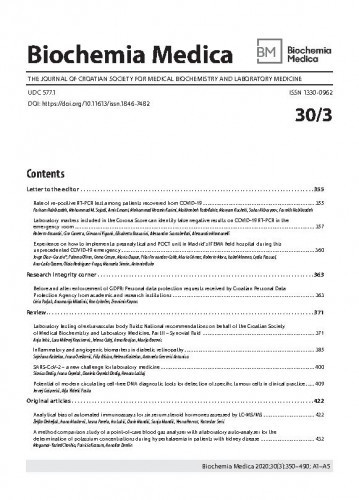Introduction: Hyperkalaemia is a common electrolyte disorder that may cause life-threatening cardiac arrythmias. We aimed to determine theagreement of potassium concentrations between GEM premier 3500 point-of-care blood gas analyser (POC-BGA) and Roche Cobas 6000 c501 autoanalyserin patients with hyperkalaemia.Methods: A prospective, cross-sectional study of all consecutive adult patients referred to the Renal Unit with a serum potassium concentration ≥5.5 mmol/L was performed. A total of 59 paired venous blood samples were included in the final statistical analysis. Passing-Bablok regression andBland Altman analysis were used to compare the two methods.Results: The median laboratory auto-analyser potassium concentration was 6.1 (5.9-7.1) mmol/L as compared to the POC-BGA potassium concentrationof 5.7 (5.5-6.8) mmol/L with a mean difference of - 0.43 mmol/L and 95% upper and lower limits of agreement of 0.35 mmol/L and - 1.21mmol/L, respectively. Regression analysis revealed proportional systematic error. Test for linearity did not indicate significant deviation (P = 0.297).Conclusion: Although regression analysis indicated proportional systematic error, on Bland Altman analysis, the mean difference appeared to remainrelatively constant across the potassium range that was evaluated. Therefore, in patients presenting to the emergency department with aclinical suspicion of hyperkalaemia, POC-BGA potassium concentrations may be considered a surrogate for laboratory auto-analyser measurementsonce clinicians have been cautioned about this difference.
Sažetak

 Biochemia medica : the journal of Croatian Society for Medical Biochemistry and Laboratory Medicine : 30,3(2020) / glavna i odgovorna urednica Daria Pašalić.
Biochemia medica : the journal of Croatian Society for Medical Biochemistry and Laboratory Medicine : 30,3(2020) / glavna i odgovorna urednica Daria Pašalić.